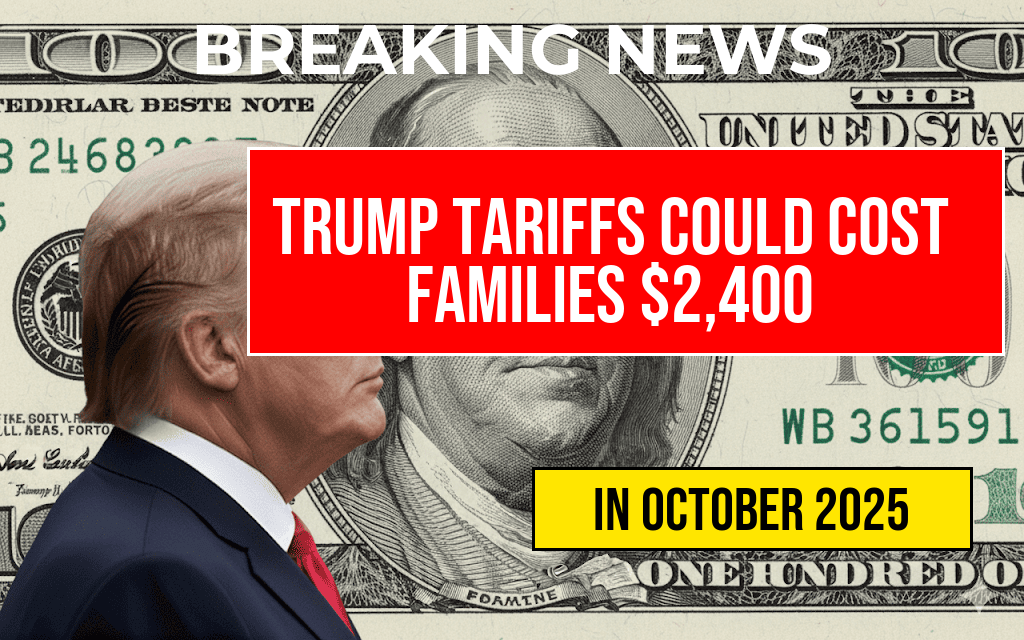Americans are increasingly feeling the financial impact of recent trade policies, with new tariffs levied during the Trump administration potentially adding an average of $2,400 annually to family budgets. Market analysts and economic experts warn that these tariffs, often dubbed the “Turbulence Tax,” are not just strategic trade measures but also carry hidden costs that ripple through everyday expenses. From higher prices on consumer goods to increased transportation costs, families may be unwittingly absorbing these burdens without immediate notice. Understanding how these tariffs influence the economy can help households better anticipate rising expenses and make informed financial decisions amidst ongoing trade uncertainties.
The Mechanics of Tariffs and Their Broader Impact
Tariffs are taxes imposed on imported goods, intended to protect domestic industries or leverage trade negotiations. While their purpose might be rooted in economic strategy, the immediate consequence often manifests as elevated costs for consumers. When tariffs target essential imports like electronics, clothing, or household goods, manufacturers and retailers pass on these costs to customers. As a result, the prices of everyday items tend to climb, gradually eroding household purchasing power.
Quantifying the Cost: How $2,400 Becomes a Family Burden
Recent analyses estimate that the cumulative effect of tariffs introduced during the Trump era could translate into an additional $200 to $300 per month for the average American family. Over the course of a year, this equates to roughly $2,400—a figure that can significantly strain household budgets, especially for middle- and lower-income households. The primary factors contributing to this increase include:
- Higher retail prices on electronics, apparel, and household goods
- Increased costs for imported food products
- Rising transportation expenses due to higher fuel prices linked to tariffs on imported energy equipment
- Cost pass-through in construction and home improvement sectors
The Hidden Costs of the “Turbulence Tax”
The term “Turbulence Tax” reflects the unpredictable and often overlooked financial turbulence caused by trade disputes and tariff policies. While policymakers debate the strategic merits of tariffs, consumers bear the brunt in several ways:
Inflationary Pressures
Tariffs contribute to inflation by raising the cost of imported goods. This inflationary pressure can lead to higher prices across multiple sectors, forcing families to allocate more of their income toward essentials. A report from the Wikipedia page on trade tariffs highlights how tariffs can ripple through supply chains, amplifying their economic effect.
Wage Stagnation and Reduced Purchasing Power
While tariffs aim to bolster domestic manufacturing, the immediate effect can be increased costs for consumers without corresponding wage increases. This disparity results in reduced purchasing power, especially impacting those with fixed or limited incomes.
Market Volatility and Consumer Confidence
Trade tensions and tariff escalations can induce market volatility, contributing to economic uncertainty that may influence consumer spending habits. Reduced spending can slow economic growth, further compounding financial strains on households.
Real-Life Examples and Sector-Specific Effects
| Sector | Average Additional Cost per Family | Primary Goods Affected |
|---|---|---|
| Electronics | $600 | Smartphones, laptops, accessories |
| Apparel | $400 | Clothing, footwear |
| Food Products | $300 | Imported fruits, packaged foods |
| Transportation | $500 | Fuel, vehicle parts |
| Home Goods | $600 | Furniture, appliances |
These figures underscore how tariffs’ influence extends beyond policy debates, directly affecting household expenses across multiple sectors.
Strategies for Consumers to Mitigate the Impact
Families seeking to soften the blow of increased costs can explore several practical approaches:
- Shop smarter by comparing prices and seeking alternatives for imported goods.
- Support domestic products to reduce dependency on imports affected by tariffs.
- Adjust household budgets to prioritize essential expenses and identify areas for cost-saving.
- Stay informed about ongoing trade negotiations and potential shifts in tariffs that could influence prices.
Looking Ahead: Will Tariffs Persist or Ease?
Trade policies remain a contentious issue in American politics, with some experts predicting a potential easing of tariffs as negotiations progress. However, the lingering effects of past measures continue to influence market dynamics, emphasizing the importance for households to remain vigilant and adaptable. Policymakers and economists alike acknowledge that while tariffs may serve strategic purposes, their hidden costs demand careful consideration of the broader economic impact on everyday Americans.
Frequently Asked Questions
What are the Trump Tariffs and how do they impact my family budget?
The Trump Tariffs are import taxes imposed during the previous administration, which have led to increased costs for goods. These higher costs can add up, potentially increasing your annual expenses by around $2,400 and affecting your overall family budget.
What is the ‘Turbulence Tax’ and why is it called that?
The ‘Turbulence Tax’ refers to the hidden financial burden caused by the Tariffs, leading to economic instability and increased consumer costs. It is called a ‘tax’ because it effectively raises prices on imported goods, impacting household finances.
Which products are most affected by the Trump Tariffs?
Products such as electronics, clothing, and household goods are among the most affected by the Tariffs, resulting in higher prices that can contribute significantly to your annual expenses.
How can families mitigate the additional costs caused by these tariffs?
Families can mitigate these costs by shopping for alternatives, buying domestically produced goods, or adjusting their household budgets to account for the increased prices due to the Tariffs.
Are there any long-term economic effects of the ‘Turbulence Tax’?
Yes, the ‘Turbulence Tax’ can lead to prolonged economic instability, affecting employment, supply chains, and overall consumer spending, which may have lasting impacts on your family finances.

Leave a Reply